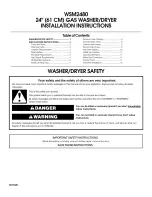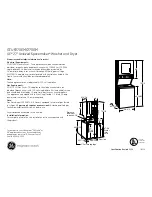
7
B.MASTER professional dryers
Drying - Cleaning - Safety notes
Drying
Start the electric fan pushing the ON button on the control panel.
If you plan to use the heaters, turn them on with the switch and adjust the temperature
operating on the regulator (
see page 6 - Control and setting of the temperature).
In the first few hours of the process it is better to use a higher setting, to eliminate the
surface humidity and avoid moulds.
As long as the drying proceeds, it is better to check the products every now and then to
prevent them to stick to the trays. It is a good idea to move or turn the products if
necessary.
Products will undergo a high loss of volume as the process advances, leaving empty
space on the trays. It is a good idea to convey the products together and use the free
trays to load some new fresh products.
The dried material will be always collected from the trays that are closer to the electric
fan. New fresh products will be loaded from the opposite side, in the right-upper van.
Before the end of the process, it is strongly reccomended to leave the fan working with
the heaters off for a few minutes, in order to cool down the electric elements.
Cleaning the dryer
We urge you not to use abrasive cloths or tools that can damage stainless steel, and
neither to use chemical detergents that can leave toxic waste on the drying trays.
Standard stainless steel detergents can be used for every part of the drying module.
The drying trays will be cleaned in hot water with normal kitchenware soap.
Every now and then the intake and outtake air grids have to be cleaned, to be kept open
and free from dust or any obstacle to the normal air circulation.
WARNING
SAFETY NOTES
- Before any cleaning and/or washing operation unplug the apparel.
- Do not use water or wet cloths on the motor-electric fan components.
- Do not use detergents that can leave residues on the drying trays.
- Clean carefully the drying trays before using the dryer for the first time, so to remove incidental
residues from manufacturing and shipping.




























